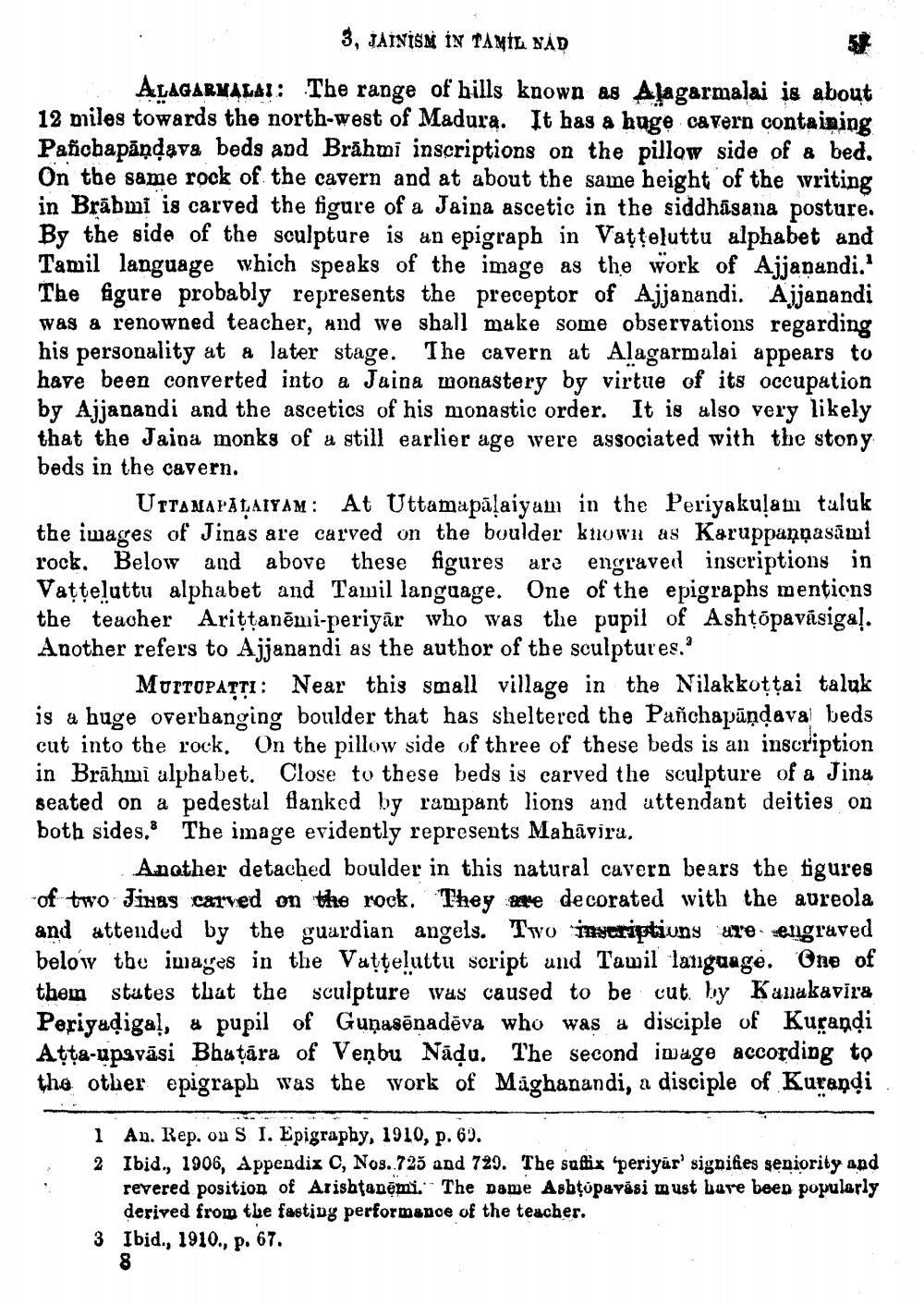________________
3, JAINISN IN TAMIL NAD
ALAGARMALA!: The range of bills known as Alagarmalai is about 12 miles towards the north-west of Madura. It has a huge cavern containing Pancbapāņdava beds avd Brähmi inscriptions on the pillow side of a bed. On the same rock of the cavern and at about the same height of the writing in Brābmi is carved the figure of a Jaina ascetic in the siddhāsana posture. By the side of the sculpture is an epigraph in Vatteluttu alphabet and Tamil language which speaks of the image as the work of Ajjanandi.' The figure probably represents the preceptor of Ajjanandi. Ajjanandi was a renowned teacher, and we shall make some observations regarding his personality at a later stage. The cavern at Alagarmalai appears to have been converted into a Jaina monastery by virtue of its occupation by Ajjanandi and the ascetics of his monastic order. It is also very likely that the Jaina monks of a still earlier age were associated with the stony beds in the cavern.
UTTAMAPALAIYAM: At Uttamapālaiyam in the Periyakulam tuluk the images of Jinas are carved on the boulder known as Karuppannasāmi rock. Below and above these figures are engraved inscriptions in Vatteluttu alphabet and Tamil language. One of the epigraphs mentions the teacher Arittanēmi-periyār who was the pupil of Ashtopavāsigaļ. Another refers to Ajjanandi as the author of the sculptures.'
MUITOPATTI: Near this small village in the Nilakkottai taluk is a huge overhanging boulder that has sheltered the Pañchapāņdaval beds cut into the rock. On the pillow side of three of these beds is an inscription in Brāhmi alphabet. Close to these beds is carved the sculpture of a Jing seated on a pedestal flanked by rampant lions and attendant deities on both sides. The image evidently represents Mahāvira.
Another detached boulder in this natural cavern bears the figures of two Jinas carved on the rock. They are decorated with the aureola and attended by the guardian angels. Two inscriptions are engraved below the images in the Vațţeluttu script und Tamil language. One of them states that the sculpture was caused to be cut by Kanakavira Periyaạigal, & pupil of Guņasõnadēva who was a disciple of Kurandi Atta-upavāsi Bhatāra of Veņbu Nāļu. The second image according to the other epigraph was the work of Maghanandi, a disciple of Kurandi
1 An. Rep. ou S I. Epigraphy, 1910, p. 69. 2 Ibid., 1906, Appendix C, Nos.725 and 729. The sofix speriyūr' signifies seniority and
revered position of Arishtanēmi. The name Ashtüpavisi must bare been popularly
derived from the fasting performance of the teacher. 3 Ibid., 1910., p. 67.




